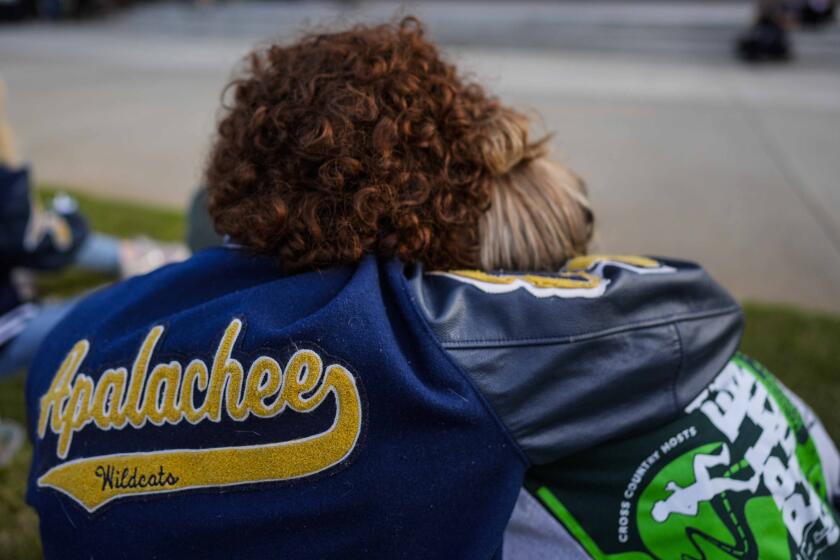Trial of Wireless 911 Underscores Flaws
One in three wireless emergency calls received by the California Highway Patrol occurs after a caller accidentally pushes a 911 button on a mobile phone tucked in a pocket or hooked to a belt, according to results from the state’s first wireless 911 trial.
The trial, which was conducted in a 63-square-mile area in the San Gabriel Valley from August to January, found that the system is hampered by a state law that requires all wireless 911 calls to be routed to the CHP, then transferred to the appropriate municipality.
In addition, call “spikes” created by freeway accidents often jam CHP lines, causing wait times that exceed one minute. Although most of the preliminary findings were expected, some--such as the accidental calls--surprised participants, said John Marengo, California’s telecom systems manager. “The operators would be sitting there and get a call, and then they’ll hear someone singing on the freeway.”
These findings underscore problems inherent in the state’s overburdened wireless 911 system, which last year received about 3 million calls.
The steady increase in mobile phone users over the last decade has put a strain on the state’s system, and the CHP expects the number of calls it receives to continue growing--doubling between now and 2002.
The Federal Communications Commission has ordered states to establish plans for wireless carriers to pass a caller’s phone number and approximate location to emergency dispatchers. The second phase of the order, which must be completed by 2001, says carriers must provide dispatchers with the location of a wireless 911 call to within 400 feet.
The San Gabriel Valley trial was designed to test technology that allows CHP operators to receive a caller’s mobile phone number and the location of the nearest tower relaying the cellular signal. CHP operators currently see a blank screen when they receive a wireless 911 call.
CHP operators who participated in the trial--and fielded up to 100 calls per incident--said access to the caller’s phone number allowed them to curb misuse of the system because they could identify pranksters and those who called accidentally.
But they also found that the approximate location of the caller was less useful, because they could only pinpoint calls within a 2- to 3-mile radius.
Regulators used the trial to study how freeway accidents cause a call spike at CHP centers. The findings showed that an accident on the Foothill Freeway in Pasadena resulted in about 50 people calling the two CHP operators on duty from their mobile phones 105 times in 10 minutes. This deluge of calls resulted in 80 busy signals, 19 answered calls and six abandoned calls.
State regulators will make recommendations to ease these jams and suggest how the state can pay for updating the current system in a final report on the trial findings due in May.
State lawmakers will also have to grapple with results of another finding from the test: About one in three calls received by the CHP in the trial area should have gone directly to municipal services, such as a city fire or police department, rather than to the CHP.
The law requiring all wireless 911 calls to go to the CHP must be changed before carriers can comply with the FCC order, Marengo said. State legislators--who were unsuccessful in repealing the provision last year--hope to address the law in this legislative session, he said.
Problems with current law are compounded by the lack of liability protections for wireless carriers in California, which prevented trial participants from testing what would happen if wireless 911 calls that should go to municipalities actually went there first without being routed to the CHP, Marengo said.
The state’s wireless carriers refused to participate in this part of the trial because, like carriers in 18 other states, they do not have the same liability protections that their land-line cousins do.
This matter could be addressed by federal legislation recently approved by the House of Representatives that would provide limited liability protections for wireless carriers. The Senate Commerce Committee is expected to introduce a companion 911 bill soon.
*
Times staff writer Jennifer Oldham can be reached at jennifer.oldham@latimes.com.
More to Read
Sign up for Essential California
The most important California stories and recommendations in your inbox every morning.
You may occasionally receive promotional content from the Los Angeles Times.










